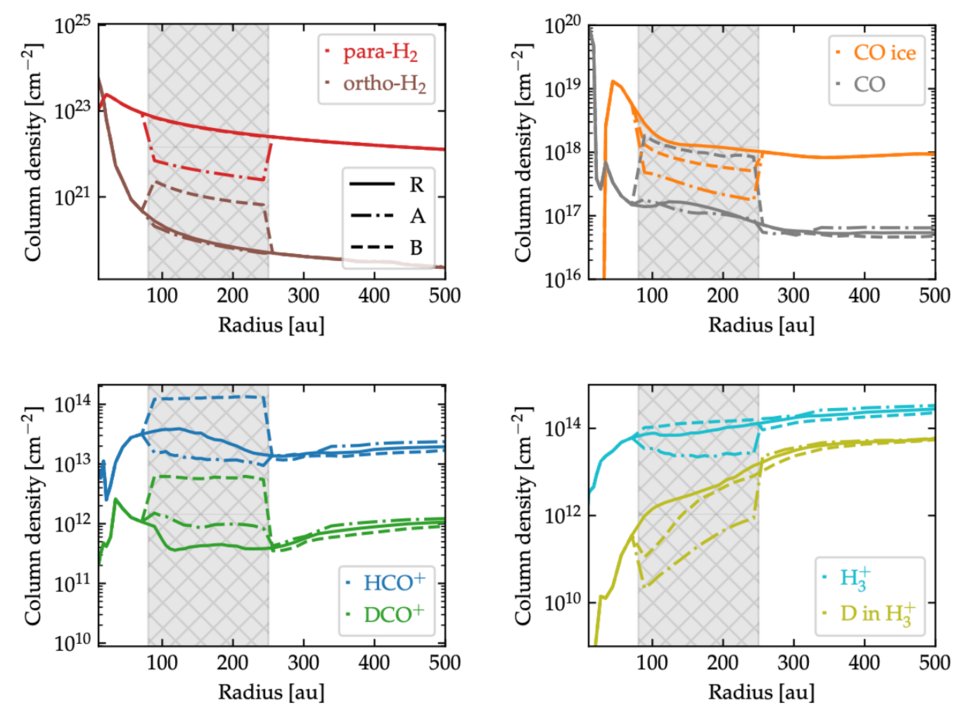
Protoplanetary disks: modeling
Protoplanetary disks where the formation of planetary systems takes place are physically and chemically complex environments. The matter remaining after the build-up of the central star(s), consisting of 99% gas and 1% small dust grains, undergoes tremendous transformation during a disk lifetime of ~10 million years. The main driving forces of disk evolution are the redistribution of angular momentum, stellar irradiation, and grain growth, settling, radial drift and destruction. These processes lead to strong gradients of physical and chemical conditions, creating a characteristic flared disk structure with cold, UV-dark and dense midplane and hot, UV- and X-ray irradiated, tenuous atmosphere, and a surface density that radially decreases. Sophisticated multidimensional (magneto)hydrodynamical modeling coupled to the radiative transfer, gas heating and cooling, chemistry and grain evolution are required to properly take all these effects into account.

However, this is a numerically challenging approach that only allows us to follow the disk evolution over a limited timescale of ~1000 years, hence simplified models are often used instead. These usually include a vertically hydrostatic equilibrium model that may or may not include the evolution of the disk mass, fixed or ad hoc-varied gas viscosity, single- or two-size dust population with the sub-micron dust population well-coupled to the gas and dust pebbles radially drifting inward in the midplane, a fixed or time-dependent chemical abundances, photoevaporation / disk winds, etc. Our group has developed or has expertise in using various advanced physical or physical-chemical disk models to study disk evolution and planet formation, to model high-quality molecular line observations, and to link the disk properties to the properties of emergent planetary systems.
List of group members/ associated members working on this: Dr. Kamber Schwarz, Grigorii Smirnov-Pinchukov (associated), Dr. Dmitry Semenov (associated), Riccardo Franceschi
